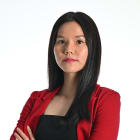GE2025: Deciphering the broader shifts behind PAP's record slate of new faces
Although there is a longstanding perception that the People’s Action Party draws heavily from the public sector including the military, data from recent general elections compiled and analysed by CNA TODAY indicate that the private sector has been the party’s main hunting ground. Other trends have emerged as well.

Over the years, the People's Action Party has been fielding more women and younger candidates under the age of 40. (Illustration: CNA/Nurjannah Suhaimi)

This audio is generated by an AI tool.
Over the past few months, new faces wearing the signature white shirts of the People’s Action Party (PAP) have been seen in neighbourhoods across Singapore, knocking on doors, talking to hawkers and shaking hands with people having their breakfast, sometimes doing so alongside senior Members of Parliament.
These men and women are expected to be among the PAP candidates to be fielded in the General Election (GE) on May 3 and as Prime Minister Lawrence Wong said, will feature the party’s “largest slate of new faces in recent history”.
Speaking at the PAP election manifesto launch on Thursday (Apr 17), Mr Wong confirmed 32 new candidates that the party plans to field in the upcoming election.
PAP fielded 27 new faces in GE2020, 22 in GE2015 and 24 in GE2011.
On Apr 12, Mr Wong reiterated the need for ever more new recruits when he unveiled his team for Marsiling-Yew Tee Group Representation Constituency (GRC).
Mr Wong, who is leading the ruling party into elections as its secretary-general for the first time, said: “We have an excellent team of MPs today, but to serve Singaporeans better, I need to renew and refresh the PAP team, to bring in new blood, new ideas and new energy.”
He added that this has been one of his key priorities since taking office in May 2024.
Apart from injecting more new faces at each successive election, a deeper look at the recruits introduced over the past four elections reflects other broad shifts within the party.
Over the years, it has been fielding more women and more young candidates under 40.
It continues to draw a significant number of new faces from the private sector, especially lawyers and doctors, but this year, it has also attracted a notably higher number of business owners and executives to join its ranks.
Political analysts told CNA TODAY that these trends show how the party is evolving to stay relevant in a changing political landscape by recruiting more diverse candidates, as it recognises that its track record may no longer be enough to win over a more discerning electorate.
MORE WOMEN AMONG NEW FACES
At the PAP Women’s Wing conference in August last year, Mr Wong said that he hoped to field more women candidates in the upcoming polls. That intent is now reflected in the numbers.
For GE2025, 40.6 per cent of the 32 new potential candidates are women, up from 37 per cent in 2020 and just over 20 per cent in 2011 and 2015.
Among the women introduced this year is Ms Cassandra Lee, an assistant director at management consultancy EY, who is part of PAP’s slate in West Coast–Jurong West GRC, led by Minister for National Development Desmond Lee.
At 33, she is the youngest new face announced so far.
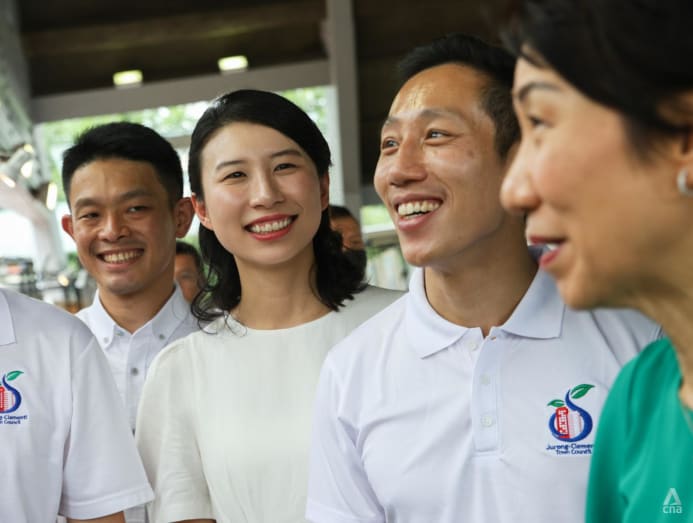
Associate Professor Terence Ho, an adjunct associate professor in practice at the Lee Kuan Yew School of Public Policy (LKYSPP), said that the increasing number of women joining PAP's ranks suggests that more women are willing to join politics, which in past decades tended to be more male-dominated.
“The increasing number of female parliamentarians over the years may have encouraged more women to step forward,” he said.
Indeed, Mr Wong noted in his speech at last August's conference that in the 1970s and up to the early 1980s, all PAP MPs were men. In the last term of parliament, close to a third of PAP MPs were women.
Dr Mustafa Izzuddin, a senior international affairs analyst at policy and business consultancy Solaris Strategies Singapore, attributed the rise in female candidates to the growing number of female voters in Singapore.
In a written parliamentary reply in May 2021, then Minister for Trade and Industry Chan Chun Sing, who is now education minister, provided a breakdown of the number of Singapore citizens on the registers of electors over the past three general election, which showed that there were more female voters in Singapore than male ones and that the number of female voters had also grown at a slightly faster pace.
There were 1.2 million eligible female voters in GE2011, which rose to 1.26 million in GE2015, and 1.36 million in GE2020, reflecting a 13 per cent increase from 2011 to 2020.
As for the number of male voters, it rose by 12 per cent from 1.1 million to 1.28 million within the same period.
MORE CANDIDATES IN THEIR 30s
This year, PAP is also fielding more young candidates: Half of the party’s 32 new faces are under 40.
This is a sharp increase from past elections. In GE2020, about a quarter (25.9 per cent) of the party’s first-time candidates were in their 30s and in GE2015, roughly a third (31.8 per cent) were from this age group.
Aside from Ms Lee from EY, other young recruits on PAP’s slate this year include the director of a battery company Ng Shi Xuan and social entrepreneur Cai Yinzhou, both 35.
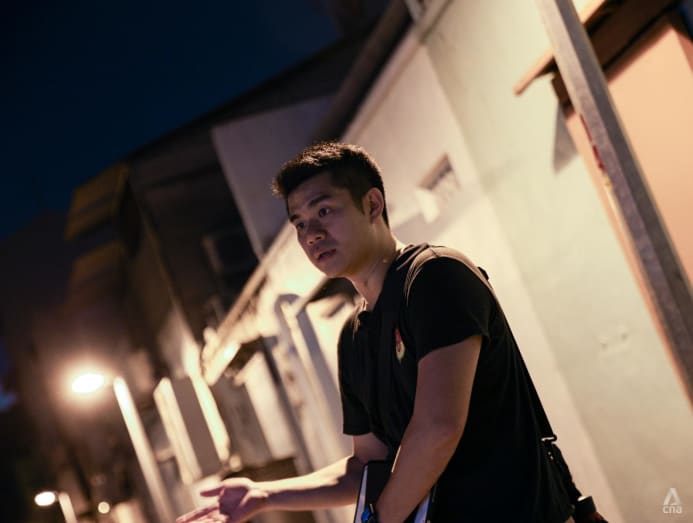
Apart from the need to infuse the party with new blood, the push to bring in younger candidates is also tied to the long runway needed for these political recruits to learn the ropes in government, Mr Wong has said.
Speaking at the PAP conference in November last year, he said new candidates need time to learn and grow into leadership roles, as he himself did when he entered politics in 2011 at the age of 38.
Given that it is very difficult to “parachute” a new candidate directly into a ministerial role, Mr Wong said it was urgent for him to have a fresh crop of younger candidates who can provide vigour and continuity, and can eventually form the next leadership team for Singapore.
He reiterated this message on Apr 12 at the Marsiling-Yew Tee GRC event, stressing the importance of ensuring a “good pace of renewal” within the party in the coming years.
He pointed out that at 52, he is one of the youngest ministers in the Singapore Cabinet and a “minority” in this sense, as a sizable proportion of ministers are aged 60 and above.
Keeping the current team in government would mean that the average age of ministers would only increase and the process of renewal would be delayed, which “will not be in the interest in the longer term for Singapore”, he added.
However, attracting younger candidates to the party has long been an uphill task.
Dr Mustafa said some young people may be reluctant about joining politics because they might not feel ready or feel like they need more time to be "tested" on the ground first.
Others may be reluctant to step into the public spotlight at all, with political service not ranking highly on their list of priorities. At this stage in life, most people are focused on building their careers, he added.
Some younger people may also lean towards joining opposition parties instead if their interests, values and ideologies are more aligned with the opposition.
That being said, Dr Mustafa noted that PAP has done reasonably well in recruiting young candidates, especially this year.
Even though having young candidates does not necessarily mean winning more votes, it certainly does help with engaging voters of specific age groups, he said.
“The belief is that (candidates of each generation) would be able to understand better the challenges and concerns faced by their peers,” he added.
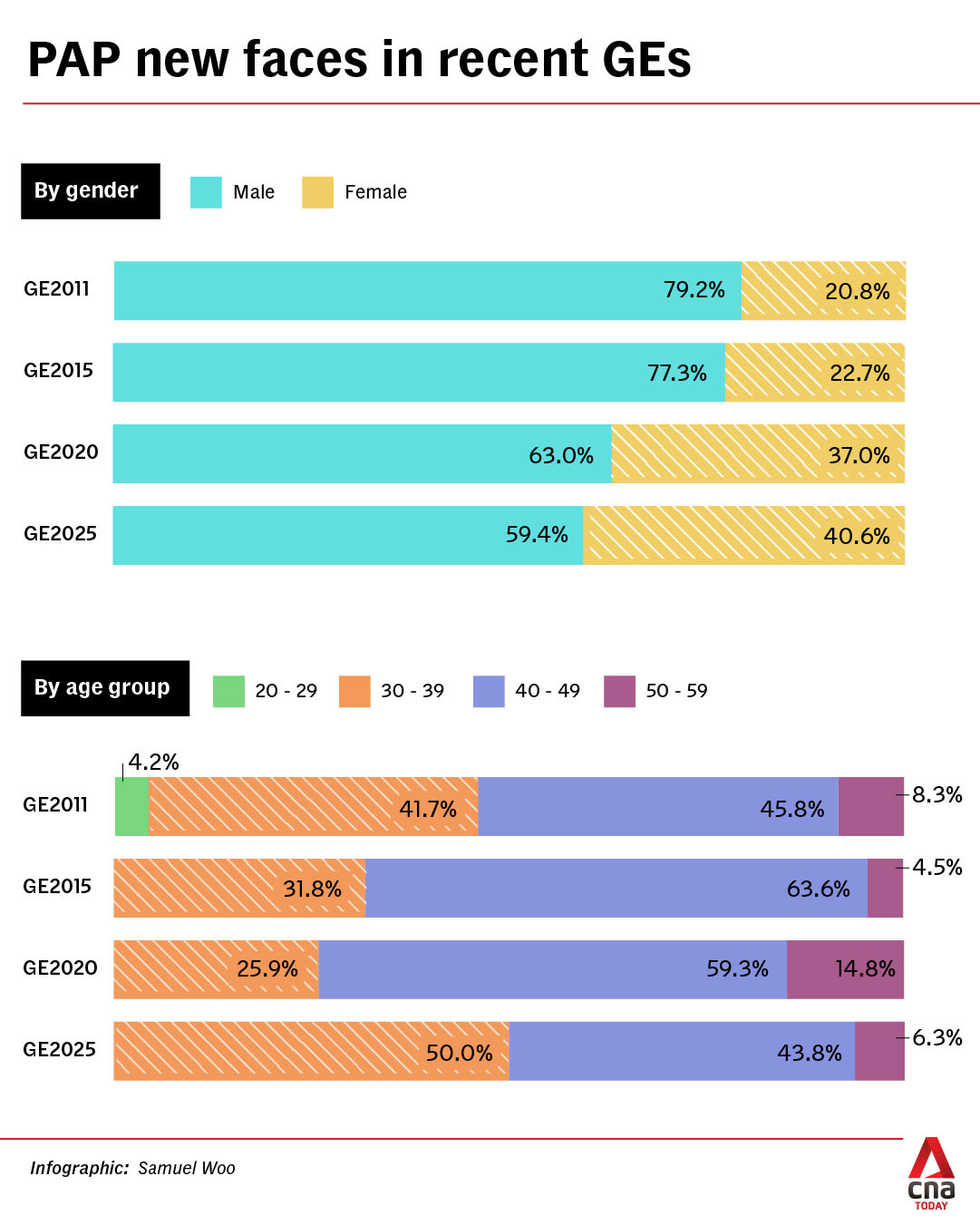
MORE BUSINESS OWNERS, EXECUTIVES
Traditionally, the PAP has drawn its new candidates from four main sectors:
- The public sector, which includes government ministries, statutory boards and the military
- Private sector companies, including government-linked corporations such as Temasek
- Non-governmental organisations and civil society groups such as charities and unions, including the National Trades Union Congress
- Academia
There is a longstanding perception that PAP draws heavily from the public sector including the military, but data from recent general elections compiled and analysed by CNA TODAY indicate that the private sector has been the party’s main hunting ground.
This year, nearly half (43.8 per cent) of the party’s 32 new faces come from the private sector. In comparison, 28.1 per cent were from the public sector; 18.8 per cent from non-governmental organisations or civil society; and 9.4 per cent from academia.
Although this marks a dip from GE2020, when 55.6 per cent of the party’s new candidates came from the private sector, the figure remains higher than in GE2011, when only 37.5 per cent had last held private-sector roles before being fielded for the polls.
Within PAP’s group of private sector candidates, the range of industries from which these new faces are recruited has also grown wider over the years.
Past line-ups often featured professionals from fields such as medicine and law, while this upcoming election has seen a marked uptick in business owners and executives entering the fray.
A quarter of this year’s new faces from the private sector hold roles as business owners and corporate leaders.
These include Mrs Bernadette Giam, 38, a director of food-and-beverage business Creative Eateries, and Mr Daniel Liu, 40, the managing director of urban planning consultancy Morrow Architects and Planners who is also executive director of Morrow Intelligence, an urban planning data analytics firm.

Pointing also to the entrance of neuroscientist and academic Choo Pei Ling, who will contest Chua Chu Kang GRC, Dr Mustafa said that the party’s decision to diversify its list of potential candidates is strategic, given that voters are also becoming more diverse in terms of their careers and passions.
Even then, political watchers pointed out that many of these PAP new faces, despite coming from more varied industries, are still people who would be considered successful in a “conventional” sense.
Associate Professor Chong Ja Ian, a political science lecturer from the National University of Singapore (NUS), said: “I think PAP is trying to recruit candidates it thinks are representative of leaders in the private sector today.”
Yet, they are mostly still “professionals with conventional pathways to success”, meaning they have excelled academically and built careers in sectors that are held in relatively high social regard in Singapore.
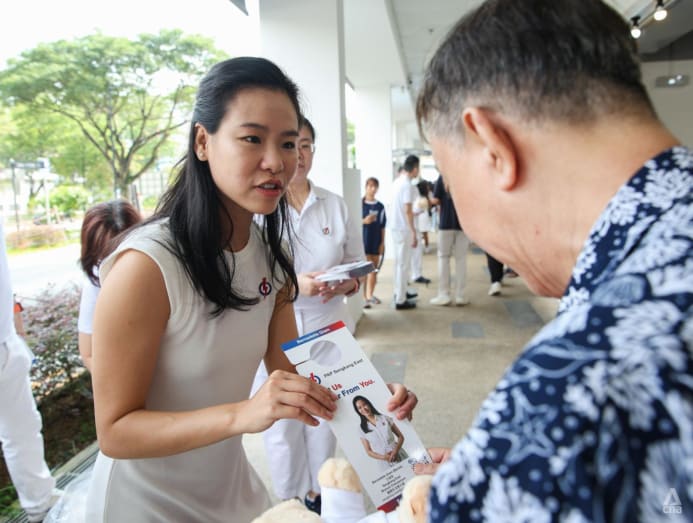
BALANCING QUANTITY AND QUALITY
Although the large number of new faces that PAP has introduced for GE2025 suggests that some incumbent MPs are stepping down, it is also due to the increase in the number of parliamentary seats, political observers said.
The number of seats being contested rose from 87 in GE2011 to 93 in GE2020 and 97 in this year’s election, after a redrawing of electoral boundaries.
In GE2020, about 20 PAP MPs retired, including heavyweights such as Emeritus Senior Minister Goh Chok Tong, former Transport Minister Khaw Boon Wan, former Manpower Minister Lim Swee Say and former Minister for Communications and Information Yaacob Ibrahim.
Since then, several more parliamentary seats formerly taken up by PAP MPs have been vacated.
Mr Tharman Shanmugaratnam left parliament to run for president in 2023. Former Speaker of Parliament Tan Chuan-Jin and MP Cheng Li Hui resigned over their affair, while former Transport Minister Mr S Iswaran stepped aside over a corruption scandal.
And on Friday, Defence Minister Ng Eng Hen announced that he was retiring from politics to make way for new blood.
Taken together, these developments help explain the scale of PAP’s recruitment for GE2025, although the move raises questions about how the party is balancing breadth and depth in its candidate selection.
To this, Assoc Prof Ho of LKYSPP said that a larger set of candidates allows for greater diversity in backgrounds and work experience. It also expands the talent pool for identifying and grooming future Cabinet ministers.
“I don’t see a dilution in quality, given that many strong candidates have stepped forward to be fielded,” he added.
Dr Teo Kay Key, a research fellow from IPS Social Lab at the Institute of Policy Studies, noted that a significant number of veteran MPs are still contesting this round, ensuring continuity and experience across GRC teams and potential town council leadership.
She added that the ability to field such a large cohort of new candidates also reflects the enduring strength of the PAP brand and its continued ability to attract qualified people.
“Even if there are individuals who are unable to serve beyond one term, several will likely prove themselves capable of shouldering heavier responsibilities such as taking charge of a ministry,” Dr Teo said.
Dr Mustafa said that as generations move forward, the crop of candidates will naturally evolve. They will differ in the way they speak and how they connect with people on the ground.
Newer generations of politicians would have to navigate both the ground and the digital space, because connecting with the electorate today means not just meeting people where they live, but also understanding what is happening online such as on social media, he added.
“So the way they think about issues is different from earlier generations. Now, that’s not to say that they have very different versions of (an event) but more about the way that they would face the issues, how they would convey the message."
Ultimately, for any political party going through a generational transition, it is important to have both older and newer generations working together, he said.
“That way, (the party) can better relate to and resonate with a larger segment of the population."
ANOTHER BUMPER CROP OF POTENTIAL CANDIDATES?
The class of 2025 for PAP will have big shoes to fill, with all eyes on who among them might emerge as part of Singapore’s fifth generation of leaders.
The 2001 and 2011 elections brought in “heavyweight” newcomers who quickly rose to key Cabinet positions after being elected.
The newcomers from 2001 included a group that became known as the “super seven”: Dr Balaji Sadasivan, Dr Vivian Balakrishnan, Mr Cedric Foo, Mr Khaw, Mr Raymond Lim, Dr Ng and Mr Tharman.
- Dr Balaji was appointed minister of state for health, transport and the environment, later becoming senior minister of state for health, foreign Affairs, and information, communications and the arts. He died from illness in 2010
- Dr Balakrishnan has been minister for foreign affairs since 2015, after overseeing portfolios such as community development, youth and sports, and the environment and water resources
- Mr Foo, who retired in 2020, held positions as minister of state for defence and national development
- Mr Khaw earned the moniker “Mr Fix-it” for his leadership across challenging portfolios such as health, national development and transport, before retiring in 2020
- Mr Lim, who retired from politics in 2015, served as transport minister from 2006 to 2011 and as minister in the Prime Minister’s Office before that
- Dr Ng had served as minister for defence from 2011, following earlier roles as manpower minister and education minister. He announced his retirement on April 18
- Mr Tharman headed several key portfolios, including education and finance, and was deputy prime minister before being elected the country's president in 2023
Among their cohort, the new faces also included Madam Halimah Yacob, who eventually became Singapore's president in 2017.
GE2011, too, had its fair share of high-profile candidates who became political office holders in their first term: Deputy Prime Minister Heng Swee Keat; Mr Tan Chuan-Jin, who helmed the Ministry of Manpower and Ministry of Social and Family Development before becoming Speaker of Parliament; and Education Minister Chan Chun Sing.
That cohort also included Mr Wong, who was appointed minister of state for education and defence in his first term. He rose quickly through the ranks, becoming minister for culture, community and youth in 2014, minister for finance in 2021 and eventually succeeding Mr Lee Hsien Loong as prime minister in 2024.
So, how do PAP’s new faces for GE2025 measure up against their illustrious party colleagues of past election cycles?
Political observers told CNA TODAY that it is too early to assess the full potential of the 2025 group, although they noted that the new faces are not too different from those of recent general elections in that they largely comprise professionals with conventional career paths, alongside a few entrepreneurs.
Among the new faces this year who stand out for their glittering curricula vitae are former Chief of Army David Neo and former senior civil servant Jeffrey Siow, both 47. Their selection is seen as being in line with the party’s tradition of tapping individuals with strong public-sector credentials.
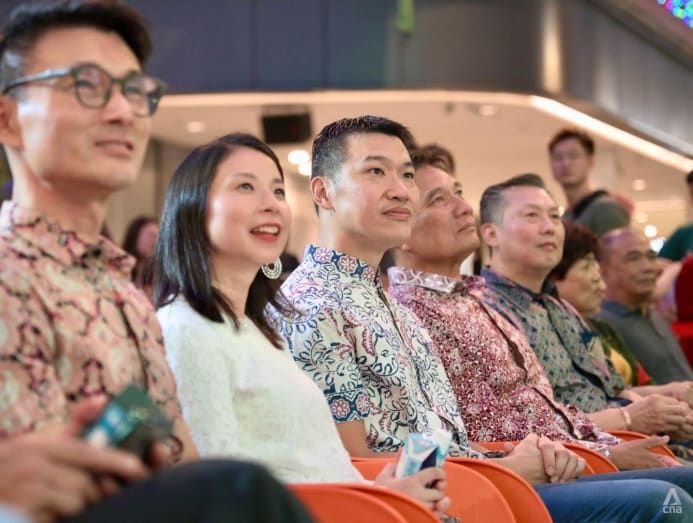
In contrast, the candidates from the private sector this year appear to have more modest resumes, Dr Teo from IPS Social Lab said.
“So far, the resumes of (these) candidates seem to be a bit more muted or they have less experience compared to candidates like Dr Tan See Leng, perhaps due to their younger age.”
At 56 then, Dr Tan, a veteran medical practitioner, was the oldest PAP new face in GE2020. Upon election into parliament, he was appointed second minister for manpower and second minister for trade and industry, before taking over as manpower minister in May 2021.
However, Dr Teo also said that this latest group of new faces from the private sector reflects PAP’s growing emphasis on community involvement and people-centric sectors, as seen in candidates such as Madam Hazlina Abdul Halim, 40, the former chief executive of non-profit organisation Make-A-Wish Singapore and Mr David Hoe, 37, the director of philanthropy at The Majurity Trust.
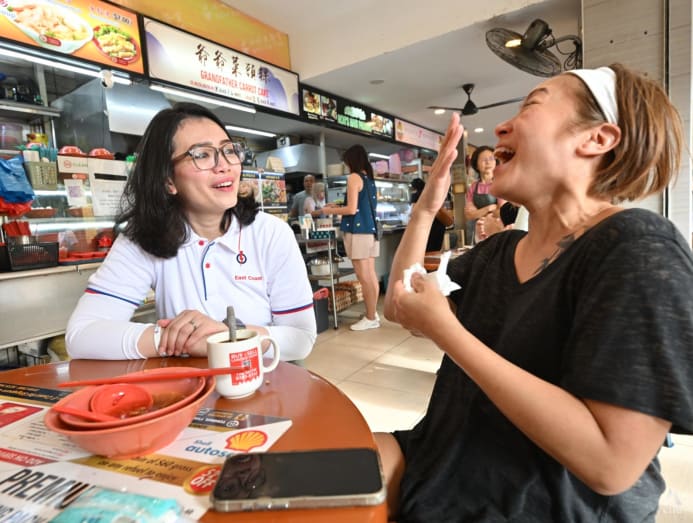
Furthermore, Assoc Prof Chong from NUS said that it is difficult to fully judge candidates' calibre just by looking at their resumes or biographies.
“What is more important is how these candidates perform under pressure, including how they advance issues that are important not only for them but also for Singaporeans.”
Asked if the current cohort is poised to yield a bumper crop of heavyweights and potential political office holders, Assoc Prof Chong said that this would only emerge in hindsight, because the label “bumper crop” simply reflects a group of politicians who have performed well over time.
“Right now, during election time, candidates will be making promises. No one knows their performance in parliament or on the ground yet, not even themselves,” he added.
“The proof of the pudding is in the eating.”


